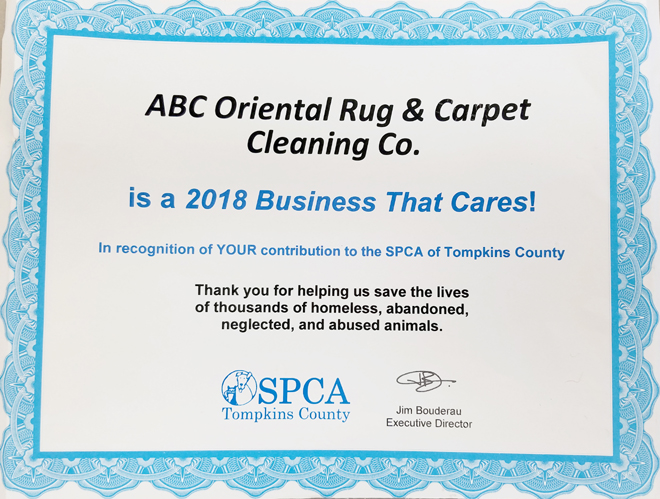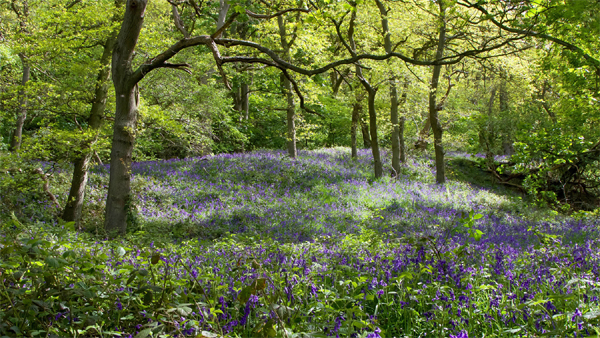ABC MONTHLY NEWSLETTER
JULY 2020
Welcome to Our Monthly Newsletter!
We hope you will enjoy this month's articles.
This month's topics are:
COVID-19 PANDEMIC
AREA RUGS Braided Rugs
MISCELLANEOUS
CONSIGNMENT RUGS FOR SALE REMINDER
If there is a topic you would like us to cover in one of our upcoming newsletters, please call us at
607-272-1566
or contact us by clicking here.
GREAT NEWS!
GOT QUESTIONS?
NOW YOU CAN TEXT US at
607-272-1566
THE ANTI-VACCINE MOVEMENT
The anti-vaccine movement in our country and around the world may be of special concern in 2020 because of the COVID-19 pandemic. The anti-vaccine movement is strongly associated with conspiracy thinking and the protection of individual freedoms, traits that also find a home among far-right groups.
For example, anti-vaxers and those who protest the COVID-19 lockdowns have a shared commonality. Coverage from these protests often show people holding signs with anti-vaccine rhetoric marching next to pro-militia activists and white supremacists.
It is also very concerning that the radical right on social media are turning the demographic of homeschooling to the right as well. This may leave many wondering just what will happen within the anti-vaccine movement today while so many companies in this country and others are racing for a safe and effective vaccine for the novel coronavirus.
THE CENTRAL DOGMA OF THE ANTI-VACCINE MOVEMENT
The central dogma of the anti-vaccine movement is that vaccines
cause autism and other bad health effects and that governments and the
pharmaceutical industry knowingly suppress this information. It seems it
is an attitude borne out of an irrational fear of chemicals.
Anti-vaxers were very much a part of early efforts to stop the Food and
Drug Administration from regulating alternative medicine.
There are many prominent spokespeople for the movement. These include Joseph Mercola, Robert F. Kennedy, Jr, many politicians, and even some presidents. This is why in the age of COVID we read about their 'natural immunity theory' that barriers to germs, like physical distancing and masks, weaken our immune system. Vaccines, they believe are just one more synthetic loaded gun aimed at our immune system.
ANTI-VAXERS-HOW THEY THINK
Research has shown that there are some similarities on how an
anti-vaxer tends to think. As a general rule, anti-vaxers tend to be:
-
those who reject vaccines and may have a skewed perception of
the risks posed by them and the diseases they prevent. Basically they
feel that childhood vaccines are risky.
- those who have more conspiratorial beliefs.
those with a strong resistance to having their freedom taken away.
- those who are more conservative tend to have stronger anti-vaccination attitudes.
Surprisingly, education was not linked to anti-vaccine beliefs.
THE ANTI-VACCINE MOVEMENT & SOCIAL MEDIA
People
who espouse anti-vaccine views can find each other quite easily through
social media. Although the social media giants have begun to crack down
on vaccine misinformation, anti-vaccine communities can quickly adapt
to the new rules. For ex., to be compliant the word 'vaccine' will
disappear in the name of their group, replaced by 'medical freedom.'
The
numbers of online supporters of anti-vaccine views have been more
successful than those publicly supporting vaccines, even though they are
smaller in numbers. On Facebook, they get very heavily involved with
clusters of Facebook users who have not yet made up their minds about
vaccines.
They offer a wide variety of stories about safety concerns, about government conspiracies, and about natural immunity. These stories can attract a great diversity of people and this diversity is also encouraged by social media companies. Platforms like Facebook and You Tube want to hold the attention of their users so they recommend other content. These groups recruit followers in anti-vax and Facebook groups related to complementary and alternative medicine.
ANTI-VAXERS DO HAVE GENUINE CONCERNS
Aside from conspiracy theories and pro-freedom sentiment, the followers of the anti-vaccination movement have some genuine concerns. These include:
- Tracking devices, such as concerns that being vaccinated would mean being chipped or tracked for the coronavirus.
- Mistrust, though justifiable, of billionaires and large organizations.
- Common knowledge that most large nations dabble or have dabbled in bio-weapons research.
- Fear of new vaccines, though not a totally baseless fear.
- Confusion about medical patents and virus naming structures.
- Fear that vaccines will mutate our own DNA because of the fact that multiple coronavirus vaccines use the RNA of the virus.
Justified worries are fed by misunderstandings and further amplified by a conspiracist mindset in online communities. Along with radical political actors, this can lead to progressive vaccine-hesitant parents holding hands with the anti-lockdown movement.
ONE VERY COMMON PIECE OF MISINFORMATION ABOUT VACCINES
One major piece of misinformation that seems to stay around in anti-vaxing circles is that the MMR (Measles, Mumps, Rubella) vaccines contain mercury and cause autism.
Please continue reading here for the facts, what pro-vaxers can do, and what the anti-vaccine movement means for the COVID-19 pandemic.
BRAIDED RUGS
Braided rugs represent an art form that has been around for a long time. The construction consists of fabric strips that are made into long braids and then crafted into this type of rug. They can be found in all colors and sizes and are typically oval in shape.
These colorful and fun rugs can remind us of earlier times when nothing was wasted and old clothes and other fabrics were cut into strips and created into beautiful braided rugs of many colors and patterns. The older rugs may even have stories attached to them. Maybe some of you remember Gramma saving Grampa's cast off ties and suits to make braided rugs for the family home.
New rugs from retail stores abound in the market as well. Many of these braids, especially the newer ones, tend to be very sturdy. The older ones, though, may often pose problems for both rug owners and rug cleaners. Some of these can be found below.
BRAIDED RUGS-DYE PROBLEMS
Whenever you purchase or are given a braided rug, whether new or old, it would be wise to test the dyes to see whether or not they are colorfast. This would be especially important when determining the type of surface the rug will be placed on, since dyes could transfer onto other surfaces.
A simple dye test involves dabbing the surface of the rug with a damp cloth to check for dye transfer. If a braided rug must be placed on top of a light colored wall-to-wall carpet and the dyes are not colorfast, a pad should be used between the rug and the carpet as a barrier. Because of the way these rugs are constructed, the preferred placement would be on a hard surface.
When it comes time to clean your braided rug, a certified rug cleaner will be able to adjust the cleaning method normally used if the dyes are fugitive (not colorfast).
BRAIDED RUGS-FILLER MATERIALS
Often, filler materials are placed inside the braids for support and to make the braids stiffer. Some of these filler materials may have been dyed and could create dye bleeding problems if the rug gets wet.
Again, when it comes time to clean the rug, it is easy for the rug cleaner to open up the braids a bit to see if this filler material exists and may have been dyed.
BRAIDED RUGS-BROKEN THREADS
Especially with older braided rugs, the thread holding the braided strips together can weaken and break. This ends up making the rug fall apart.
As a general rule, chair and table legs should never be placed on a braided rug because their movement can, over time, pull the fabric strips apart as well. The broken areas can also present a tripping hazard.
REPAIR OF BRAIDED RUGS
Please continue reading here for more information about braided rugs.
PAPER RUGS
Paper Rugs?! Yes. That is right. Such a product actually does exist today. Surprisingly, this type of rug is not entirely new on the market.
Rugs made entirely of cigarette papers, such as one found in South America represent an interesting from of art. But with the price of cigarettes today, it would probably also be quite an expensive rug.
Paper rugs are novelty rugs. They can be artsy, interesting, amusing? But buyer beware! Besides being expensive, a paper rug can end up being even more costly to those who do not know what they have.
We will tell you why in this article.
PAPER RUGS ARE NOT PRACTICAL
First we need to look at the 'care comments' that can be found from such companies as Coastal Style Paper Rugs:
- Regular vacuuming is the best method for keeping its appearance fresh. We do recommend daily, or at least weekly, vacuuming with a good quality vacuum.
- Clean-up of spills is dependent on the type of spill, and we recommend you follow our stain specific recommendations.
- The important thing is to try to clean the spill without the use of liquids.
- Dry spills are easiest cleaned by scraping the material with a blunt blade (such as a teaspoon or butter knife), gently scooping up the material from the edge towards the center.
- Liquid spills should be immediately blotted or patted dry with a clean absorbent cloth.
- Do not rub the spill area as this can force the liquid further into the fiber.
This information leaves many questions unanswered:
- Would you really enjoy living with a rug that requires DAILY vacuuming?
- How exactly would you tackle a juice spill on your paper rug if you cannot use liquid to help clean up a spot?
- Is there a special paper spill remover out there such as a huge eraser?
- If you are too aggressive, perhaps you could use some White-out to fix it up!
- Are these rugs really eco-friendly?
- Are these rugs contributing to the better health of your indoor environment?
THE BENEFITS OF PAPER RUGS vs WOOL RUGS
If we compare the benefits(?) of paper rugs to those of wool rugs, it becomes apparent that the wool rug will win every time:
- Wool is a completely renewable resource and it grabs contaminants and dust from the air like an air filter.
- Wool helps keep the air in a room naturally cleaner and has many pockets in the fibers to hide the grit.
- You do NOT have vacuum a wool rug more than every few weeks to keep it nice and clean.
THE CONS OF PAPER RUGS
PAPER IS ABSORBENT
Just about every rug that comes in for cleaning at our ABC rug plant has some type of spill on it. The care instructions for the paper rug says to clean without liquids. When was the last time you tried to clean a spill without a liquid? You might be able to pack the area with salt or cornstarch or baking soda to help absorb away the spill element, but you will not get it all which means there will be residue left behind.
If that residue is sugary (if you have kids) this will end up being a meal for insects and if that residue is a little smelly (if you have pets), that will be odor that you may only be able to remove with scissors!
The benefit of area rugs in general is that they can be removed from the home to properly and thoroughly washed. With a paper rug, you are removing the possibility of your rug washing clean. With a floor covering that will have countless feet, shoes, and paws on it, just how clean do you think you can keep that rug in your home?
When you are done with a paper rug, you can always use it as packing material for any shipments you have with FedEx! But if an 8x10 rug is just under $1000,that would be some pricey packing material.
PAPER IS A FOODSTUFF FOR MOLD
Mold feeds on many things, paper being one of them. Paper is absorbent, and even without a direct spill there could be issues in a high humidity environment. If there were to be several spills over time, it would be difficult to get the twisted fibers completely dry if they ever get wet.
Please continue reading here for more cons of paper rugs and more information.
THOMAS JEFFERSON & SLAVERY
THOMAS JEFFERSON & THE DECLARATION OF INDEPENDENCE
Thomas Jefferson, statesman and third President of the United States was chosen to be the chief writer and architect of the 1776 American Declaration of Independence.
Though honored, he actually felt John Adams or Ben Franklin were better suited. But Franklin was ill at the time and Adams told Jefferson he was a better writer. So the job of writing the document, the first formal statement asserting the right of people to choose their own government, fell to Jefferson.
THOMAS JEFFERSON & THE SLAVE TRADE
At the time of the writing of the Declaration of Independence, Britain had complete control of the world's seas and was a chief promoter of the transportation of slaves.
Jefferson considered slavery to be one of the greatest threats to the new nation. He believed that even though slavery was allowed to one degree or another in the world as well as in the 13 colonies, this slave transportation was a main cause of the slavery entrenchment in America.
He argued that the abolition of the slave trade would be the first step in a plan that would weaken slavery and hasten its end. He included his appeal to abolish slave trade into the Declaration of Independence.
Unfortunately, on July 3, 1776, when Jefferson's document was read by the second Continental Congress, some passages from the original were removed because they were considered to be overly inflammatory. One crucial item that was deleted in the original draft was his condemnation of the British promotion of the slave trade.
Jefferson was enraged but could do nothing. After these passages were removed, the Declaration was finally signed and approved on July 4, 1776.
JEFFERSON-SLAVE OWNER and SLAVERY ABOLITIONIST!
While Jefferson was very active in legislation during the American Revolution to abolish slavery, slave holding was very much legal and very entrenched in the original 13 colonies.
Jefferson, himself, owned slaves. It should seem quite odd that the man who wrote 'all men are created equal,' was the same man who enslaved more than 600 people throughout his life.
The same man who called slavery a 'moral depravity' and a 'hideous blot' was the same man who profited directly from the institution of slavery and yet publicly opposed it.
JEFFERSON'S PLAN FOR THE END OF SLAVERY
Although Thomas Jefferson was outspoken about the need for the end of slavery, he was in favor of a gradual emancipation of slaves rather than an all-out anti-slavery law.
He had always maintained that the decision to emancipate slaves would have to be part of a democratic process and could not happen until all slave owners were ready to consent to free their human property at the same.
If part of America was in favor of abolition and part of America was in favor of continuing slavery, Jefferson believed the result would be a civil war that would destroy the new union. History proved him right!
JEFFERSON'S AMELIORATION OF SLAVERY PLAN
Jefferson continued to fight for the end of slavery throughout his adult life, though the odds were not in his favor.
As a prologue to total abolition, he introduced a plan for the amelioration of the living conditions and moderation of punishment applied to the enslaved blacks. He instituted this reform with his own slaves on his plantation, Monticello.
Unfortunately, this plan of Jefferson's to abolish slavery by first improving its circumstances backfired after his death. Pro-slavery advocates felt if slavery could be improved, it did not need to be abolished.
JEFFERSON'S SLAVES
Even though Thomas Jefferson was a slave owner for his entire adult life, he abhorred the violence and coercion of the slavery system that was in place. He wanted the slave labor at his Monticello plantation to look more like free labor.
Even though he believed the slaves to be inferior to whites, he preferred to treat his own slaves as 'humans' rather than as 'property.'
He began by abandoning labor-intensive tobacco making and started to cultivate less intensive wheat. But wheat required very little labor and presented Jefferson with a labor surplus. Because of this surplus, he found ways to transition his male slaves from field workers to skilled laborers to work in the shops and warehouses on his plantation. They became blacksmiths, nail-makers, and carpenters. Many of the women became laundresses, parlor maids, cooks, and seamstresses.
Jefferson wanted to make sure his slaves were well treated and even offered financial incentives such as tips or percentages of workshop profits to those laborers who he felt were contributing to the efficiency of the work. In addition, he also provided many of his slaves with single-family homes all across the plantation, rather than in multiple family huts close to the fields and an overseer's home as was necessary with tobacco farming.
BAN ON SLAVE TRADE FINALLY ENACTED
In 1793, Canada passed the Act against Slavery to prevent 'further introduction of slaves and to limit terms contracts for servitude.'
In Britain, Parliament passed an act to abolish the slave trade (but not slavery itself) within the British Empire and on the Atlantic in 1807.
Nations throughout the world, including the United States, passed similar legislation during the next 10 years. These acts essentially gave slave traders the status of pirates on the high seas.
Unfortunately, contrary to Jefferson's beliefs, the ban on slave transportation did not hasten the end of slavery. That required the Slavery Abolition Act of 1833 in England and the Civil War in America.
THE DARK SIDE-JEFFERSON'S RACISM
For further information, please continue reading here.

BRING YOUR RUG TO
THE RIGHT PLACE
FOR
TOTAL URINE ODOR REMOVAL
No Fragrances
JULY CLEANING SPECIALS
- 20% Off Rug Urine Odor Removal
- 2o% Off Rug Moth Repel
- 50% off In Home Carpet Sanitizer
***
Please call or text our office at
607-272-1566
for details!
THANK YOU!! WE LOOK FORWARD TO CONTINUING TO SERVE YOUR TEXTILE CLEANING AND REPAIR NEEDS!
Get New Posts Right To Your Inbox!
Get our monthly newsletter, just like this one, delivered right to your inbox each day. Just sign up and we will send you the best new articles and videos as they become available.
Your email address will NEVER be spammed, sold, or shared. You are welcome to unsubscribe at any time with the link in the email.
"The Cleanest Clean You've Ever Seen."
by
ABC Oriental Rug & Carpet Cleaning Co.
130 Cecil Malone Drive Ithaca, NY 14850
607-272-1566

ABC
Carpet & Rug
Spotting Guide

ABC Oriental Rug & Carpet Cleaning Co. has been family-owned and operated in Ithaca and surrounding areas for more than 49 years.
Our company is a reflection of our family name and pride.
Please Like us on Facebook!
for more information and to find out what we are doing at our business and in the community!
Stay Connected!
Links to Our Services
Allergy Cleaning
Area Rug Cleaning
Oriental Rug Cleaning
Rug Hand & Machine Repair
Upholstered Furniture Cleaning
Tile & Grout Cleaning & Sealing
We are proud sponsors of the SPCA of Tompkins CO:

Newsletter Archives


